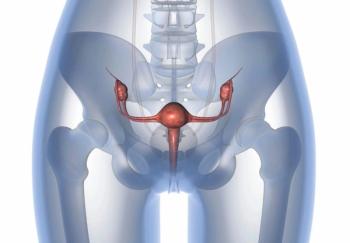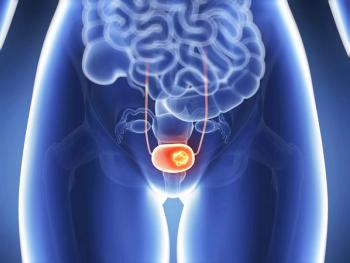
Neoadjuvant Cemiplimab/SBRT Yields Improved DFS in Resectable HCC
DFS rates at 2 years were improved with cemiplimab plus SBRT vs cemiplimab alone in patients with resectable hepatocellular carcinoma.
The 2-year disease-free survival (DFS) rates were favorable, and significant tumor necrosis (STN) rates were similar between treatment groups when neoadjuvant cemiplimab-rwlc (Libtayo) was added to stereotactic body radiotherapy (SBRT) in the treatment of patients with hepatocellular carcinoma, according to results from a phase 2 trial (NCT03916627) presented at the
The DFS rate at 1 year in the cemiplimab-only arm was 79% (95% CI, 53%-92%) vs 88% (95% CI, 59%-97%) in the cemiplimab plus SBRT arm. At 2 years, the DFS rates were 62% (95% CI, 36%-80%) vs 88% (95% CI, 59%-97%).
A total of 20% of patients in the cemiplimab monotherapy arm experienced STN vs 19% in the cemiplimab plus SBRT arm. Complete tumor necrosis was observed in 15% vs 13%, respectively.
Kaplan-Meier curves were utilized to analyze factors affecting DFS. By pathological response for STN of more than 70% vs no STN of 70% or less, the HR was 0.42 (P = .39). For pre-operative ctDNA reduction of more than 50% vs 50% or less, the HR was 0.55 (P = .32). For minimal residual disease (MRD) after surgery of either being MRD negative or positive, the HR was 0.18 (P = .002).
ctDNA dynamics looked at mutant tumor molecules fold changes over time by pathological response with cemiplimab only and with cemiplimab plus SBRT. Results showed that ctDNA correlated with tumor size (r = 0.84; P <.001).
Neoadjuvant treatment-related adverse effects (TRAEs) occurred in 29% of patients in the cemiplimab monotherapy arm vs 55% in the combination arm, while adjuvant TRAEs occurred in 39% vs 67%. Grade 3 or higher TRAEs occurred in the neoadjuvant setting in 9.5% vs 0%, and in the adjuvant setting, the rates were 17% vs 0%. Serious TREs were noted in 5% vs 0% in the neoadjuvant setting, and 17% vs 0% in the adjuvant setting.
“Two-year DFS with neoadjuvant therapy is favorable compared with historic controls. Patients who received cemiplimab plus SBRT have favorable relapse-free survival compared with patients who received cemiplimab alone,” Dan Feng, MD, assistant professor of Medicine, Hematology, and Oncology at Mount Sinai Ichan School of Medicine, and co-authors wrote in the poster. “Neoadjuvant immunotherapy with cemiplimab with or without SBRT had an acceptable safety profile.”
Patients were enrolled in either the cemiplimab monotherapy arm (n = 21) and given 350 mg every 3 weeks for 2 cycles, or the cemiplimab plus SBRT arm (n = 21) and given SBRT at 8 Gy for 3 fractions over 1 week and cemiplimab at 350 mg every 3 weeks for 3 cycles. In both arms, patients then went on to surgery followed by another round of cemiplimab at 350 mg every 3 weeks for 8 cycles. In the combination arm, patients were followed for up to 5 years.
The primary end point was STN, with secondary end points of DFS and the incidence of AEs. Exploratory end points included circulating tumor DNA assessment and pharmacodynamic evaluations. ctDNA was collected before the first and second doses of neoadjuvant cemiplimab, 4 weeks post-surgery, during the first dose of cemiplimab adjuvant therapy, during cemiplimab adjuvant therapy of cycle 2 day 1, and at 30-day follow-up.
The July 31, 2025, cutoff showed the last patient was on study for about 24 months after a surgical resection on August 23, 2023. The median follow-up was 41 months post-resection.
Between both arms, 61% of patients were 65 years or older, 83% were male, 51% were Asian, and 76% were not Hispanic or Latino. Additionally, 88% of patients had an ECOG performance status of 0, 58% had a tumor that was larger than 5 cm, and 86% had 1 tumor.
Reference
Feng D, Crowley F, Hapanowicz O, et al. Disease-free survival with neoadjuvant cemiplimab +/- stereotactic body radiation in resectable hepatocellular carcinoma. Presented at the Society for Immunotherapy of Cancer 2025 Annual Meeting; National Harbor, MD; November 5-9, 2025.
Newsletter
Stay up to date on recent advances in the multidisciplinary approach to cancer.























































































